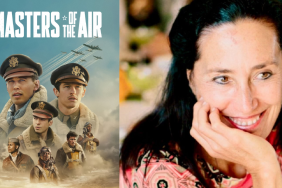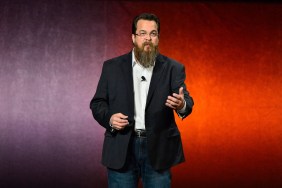
Are you hungry?
If your answer is “yes” then you can probably walk over to your refrigerator or pantry and find something healthy and tasty to eat. Maybe you can get on the phone and call a local restaurant to deliver you something. Who knows? Maybe you’re even a burgeoning master chef and can throw something together that will get you a job cooking healthy food for others.
Either way, there are many people who don’t have these benefits, those who suffer from extreme poverty or can’t afford to buy healthy food, a problem that’s reached epidemic proportions as the price for healthy foods has gone up, leaving them no choice but to eat inexpensive junk food. That in turn leads to obesity, which is almost as bad as starving.
The number of people who can’t afford to buy food in this country is staggering–reportedly 50 million people–and unfortunately, a good percentage of those that suffer the most are children who need healthy food to grow properly, but often end up starving or eating inexpensive junk for sustenance, leading to obesity.
Kristi Jacobson and Lori Silverbush decided to address these issues head-on in their new doc A Place at the Table, which follows three people from different backgrounds–a Colorado 5th grader named Rosie who lives in poverty, single mother Barbie, who has trouble affording food for her two children, and Mississippi 2nd Grader Tremonica who is suffering from severe obesity. Their moving stories are intertwined with interviews with experts in the field including Oscar-winning actor Jeff Bridges, who has been actively involved by founding the End Hunger Network. Bridges may also have helped to get his Crazy Heart collaborator T Bone Burnett involved in creating the film’s terrific score with The Civil Wars.
The film is executive produced by chef Tom Colicchio, best known for his hit Bravo competition show “Top Chef” and its various spin-offshe also happens to be married to Silverbush. Having used his considerable clout in the cooking community to help spread awareness of the issues for many years, Colicchio got on the phone with ComingSoon.net last week to talk about the movie and the issues it covers. Unfortunately, we knew as soon as we asked our second question that we probably should have asked for more time, since Colicchio has a lot to say on the subject and we were hoping to talk more about “Top Chef,” which we barely had a chance to touch upon.

ComingSoon.net: Great movie. It really resonated with me for a lot of reasons.
Tom Colicchio: Thank you.
CS: My first question was going to be to ask how you got involved but then I realized one of the directors is your wife, so I guess the question is more how you both got involved in this topic and decided to make a movie about it?
Colicchio: Well, about three years ago–actually it goes back further than that–but about three years ago, Lori came to me and said, “I’m really interested in exploring this and I’d like to make a film.” She reached out to Kristi Jacobson, her co-director on it, who is more from a documentary world–Lori does mostly narrative stuff–and so that’s how it panned out. I think you have to go back like 25 years ago. As a chef, I’ve been very active with my industry, raising money for various hunger issues, raising money for groups like Share Our Strength or Feeding America, local food banks. Chefs have been very active in raising money for all sorts of issuesfood, I think, has become a real sort of pet project for most chefs. Doing that for 25 years and with the similar work Lori and I were doing raising money and trying to raise some awareness on the issue. Then also, a couple years back, she made a narrative film called “On the Outs,” which was a story about young women in juvenile detention, and she actually spent a lot of time in prisons talking to some young women who were incarcerated. One woman had told her that prison was not so bad because at least you get some meals.
Then more recently, four or five years ago, she was mentoring a young girl, and we managed to get her out of public schools in New York and into a school that could deal with her disabilities, a private school, so we were really happy that we got her some attention that she needed. However, this school, because it wasn’t a public facility, didn’t have a lunch program. We got a call in from the principal saying she is clearly hungry and scrounging around for food. We didn’t realize that the lunch that she was getting in school was probably the only meal she’s getting all day. Those things all together was clearly in Lori’s conscious about hunger and she just decided as a filmmaker that she can help and possibly use her talent to help everyone change the fate of hunger and help people understand the issues and then hopefully get people acclimated around the issue and hopefully start having Congress focus on it.
CS: I remember seeing the documentary “Hunger in America” on television and it’s scary that 40 years later, it’s still a problem, and there’s even more issues involved including the cost for healthy food, fruits and vegetables.
Colicchio: Right, right. Yeah, and that show is very similar because as soon as she started doing research, before launching into filming, after she learned about that film, she was really encouraged because she saw that a film worked once before and it helped get bi-partisan support to create these modern food networks that people still rely on today. It was encouraging that a film could do it again.

CS: It seems to be more than a money problem at this point and there are a lot more issues involved, so what an average person do at this point to try and help with this?
Colicchio: I found it very interesting that we had a Presidential election and during the primary debates, hunger never came up. Clearly, that tells me that on the Republican side, they would rather ignore our hope that charity and church will take care of it, which hasn’t lent itself to be true. I think on the Democratic side, it’s not something to win elections on, and I think that needs to change. I think it needs to become an election voting issue, and I think that will happen when enough people get together and start demanding of their politicians to focus on this. From spending time making the film and trying to immerse myself more into the politics of it, you realize that it’s actually good policy from both a Republican side and a Democratic side just to fix this. If you look at the idea of shrinking government
Now I would imagine anyone would think that it’s probably worth it to spend $20, $30, even $40 billion to get a return of $120 billion. That’s exactly what we’re talking about because the healthcare costs for hungerand the cost to our economy is about $113 billion a year. These are real numbers–I’m not making these up.
It’s just sort of the basic idea that a child that is food insecure, that is constantly going hungry, they have compromised immune systems, they have other high inhibitions that happen because they’re not being fed properly. They end up going to hospital and staying in the hospital. A two-day stay, a 48-hour stay in the hospital costs taxpayers as much money as it would cost to feed this kid an entire year. The idea that if you want to actually start lowering costsand there’s a lot of talk about entitlement programs and Medicare having to come down and the cost of healthcare is sort of expensive. Well, one way to get that down is to make sure 17 million children that are food insecure actually have not only food, but healthy food to eat. You would think that that would be the way to do it.
If you look at another way to express it, a lot of people believe that if you raise the minimum wages, people could make a living wage. I guess I should preface this by saying the majority of the people on food stamps or on SNAP, there’s at least one person working within the family. They’re earning enough money to actually take care of the family. If we raise minimum wage, and let’s just say we were to raise minimum wage to $10 an hour. I know the President’s State of the Union asked for $9 an hour, but let’s just say it’s $10 an hour. Well, how many people now that are making more money won’t have to rely on public assistance? So you’re actually shrinking government, right?
Now, I’m a small business owner and I start everybody around $9 an hour. But if I had to pay everybody $10 an hour, I would take a hit without a doubt, but on the other side, why don’t we create tax policy to lower taxes on the business side of things? See, that’s a win-win. If you’re a fiscal conservative, you get smaller government because less people are on public assistance, you get lower taxesthat’s what you want, too. Why can’t the two sides get together and decide what actually works for both sides? That’s something that’ll do it. Again, these are things that can be done that are smart that can address the issue in a big way. What’s frustrating is that the public hasn’t gotten together and said, “Enough is enough and we need to fix this.” If you just think about just the idea of what we think of our country and the country that we want to live in, and if you look at 50 million Americans are completely marginalized because they can’t feed themselves, they can’t feed their family, the potential loss it shouldn’t happen.

So on so many different levels, this should be an issue that we’re all really focused on, and yet clearly–because it doesn’t come up in primary debates–it’s not something that is resonating. It’s great that the President stated that we’re actually focused on it. He talked about minimum wage. He actually talked about people being able to feed themselves, and so, you hope that it’s starting to happen and we’re clearly hoping that enough people get out and see this film that they realize how big of an issue it is. Now, we’ve been doing screenings, and during a Q&A, one question I asked the audience is, how many people were aware that the situation was as bad as it is? They all shook their heads and had absolutely no idea.
CS: You’ve produced a number of successful television shows and I remember Chef Jamie Oliver tried to bring focus to this issue with “Food Revolution” as he tried to fix some of the problems in public school systems. I don’t know what happened with the show, but you could see how hard it was for him to get any sort of results.
Colicchio: Yeah, I think the ratings were pretty poor. I don’t know how a show like that sustains itself. I saw a few episodes. I think the message was really good. I don’t think primetime, 10 o’clock at night, people watching TV are looking to watch a show like that. I think that’s why it didn’t work. They tried to turn it into a reality show of sorts, and I just think that somewhere in there, the message was completely lost. But Jamie does great work on it. He has a basic platform, a huge platform to stand on and talk about things that he thinks make sense. Quite frankly, I’d rather someone like Jamie, who has that kind of platform to talk about things that matter, as opposed to what some other people are doing in the public eye. I think that it’s a good idea, but I just think that it’s a tough show to get a lot of people to watch on primetime, yeah.
CS: Obviously you’ve turned “Top Chef” into a successful show that’s spawned many more food shows and you did discuss this topic on “Top Chef” by having challenges, but how much of this can you fit into a show that has so many people watching it like “Top Chef”?
Colicchio: Not really. On “Top Chef,” we actually had that segment before we started working on the film, that was several years back. Bravo is going to help me get this message out there about the film. I think right around the finale, there will be some banner ad that will come across the screen about the film, so they’re definitely helping out. Again, I think that what “Top Chef” has done has really given me a platform by which people will listen to me, and so that’s how I’m using it. I don’t know how this will work into any other seasons of “Top Chef”–they’re two separate things. But Bravo is definitely very, very supportive of what we’re doing. In fact, NBC, every year they have various things that they focus on. Last year was green, and this year is going to be poverty, so yeah, as you saw on “The Today Show,” for instance, there’s somebody there who has done a PSA about this issue, so the industry is being very supportive.
CS: I was curious on your thoughts on how to get people to see this movie because while it’s very informative, it’s also an incredibly moving film, but it’s hard to convince people to see docs in general.
Colicchio: Yeah, help get the message out there. People need to see it, then once they see it, they can get information as to what they can do afterwards. There’s a whole outreach program. If you go to TakePart.com/Table, there’s a great site that is being put together that’s basically taking all the various organizations that work on behalf of hunger issues and advocacy and bringing it together in one area there. If you are interested in finding out how you can help, you can go to this site and get some information.
A Place at the Table opens in select cities and will be available on VOD and iTunes starting Friday, March 1. You can see the full list of theaters by clicking here.









